Wild animals are masters of deception, and they’ve got some seriously clever tricks up their furry sleeves when it comes to hunting their prey. These sneaky tactics not only showcase their intelligence but also highlight the intricate dance of survival in the wild. Let’s dive into the wild world of deception and explore how these crafty creatures pull off some of nature’s greatest con jobs.
1. The Master of Disguise: Cuttlefish
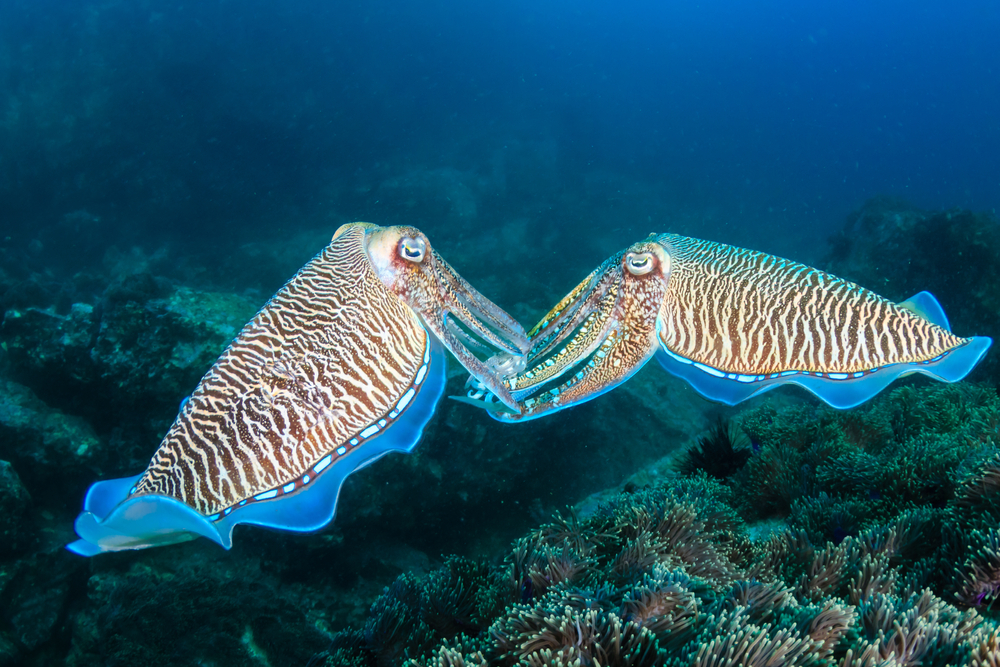
Cuttlefish are the ultimate chameleons of the sea, and their ability to change color and texture is nothing short of mind-blowing. When they’re on the hunt, they can blend in perfectly with their surroundings, making them nearly invisible to unsuspecting prey. But these marine magicians don’t stop there; they can also mimic other sea creatures or objects to confuse and lure their targets closer. According to National Geographic, their skin contains specialized cells called chromatophores, which allow them to produce a dazzling array of colors and patterns. This ability not only helps them ambush prey but also evade predators. Watching a cuttlefish in action is like witnessing a living piece of art, constantly shifting and transforming.
But wait, there’s more to their bag of tricks! Cuttlefish can use their color-changing prowess to hypnotize prey, particularly small fish. By rapidly flashing mesmerizing patterns, they can disorient and stupefy their victims, making them easy pickings. This strategy is akin to a flashy magician distracting their audience with one hand while pulling a rabbit out of a hat with the other. It’s a testament to how deception in the animal kingdom can often involve a mix of camouflage and psychological manipulation. Truly, the cuttlefish is a master of both mind and body.
2. The Small Sneaky Predator: Jumping Spider
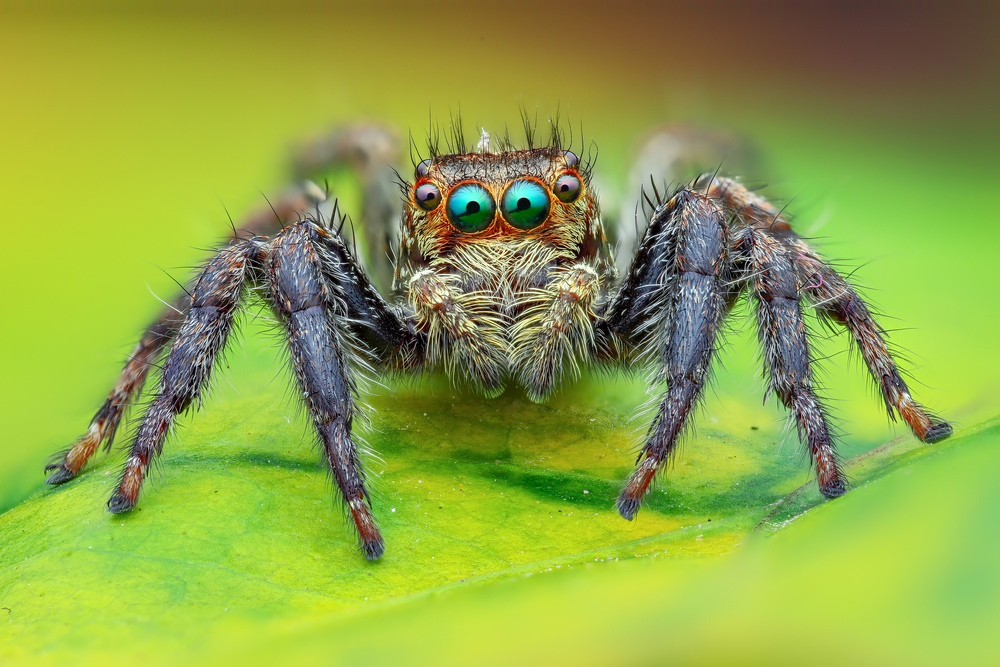
The tiny jumping spider has an enormous brain for deception. This little arachnid is a predator that preys primarily on other spiders, and it does so with a level of cunning that would make a spy envious. According to JSTOR, they carefully observe their target and learn its web’s structure before launching an attack. It can mimic the vibrations of prey caught in the web, luring the resident spider into a false sense of security. Once the target approaches, expecting an easy meal, they pouncs with deadly precision. This clever strategy allows them to overcome spiders much larger and more dangerous.
These spiders are known for their ability to solve problems and plan escape routes in advance, showing a level of cognitive flexibility that’s rare in the insect world. By employing different deceptive tactics based on the situation, they can adapt to various predatory challenges. It’s like they have a mental playbook of tricks ready for any occasion. For a creature with a brain the size of a pinhead, the jumping spider is a testament to the power of strategy and deception in nature’s game of survival.
3. The Disguised Assassin: Orchid Mantis
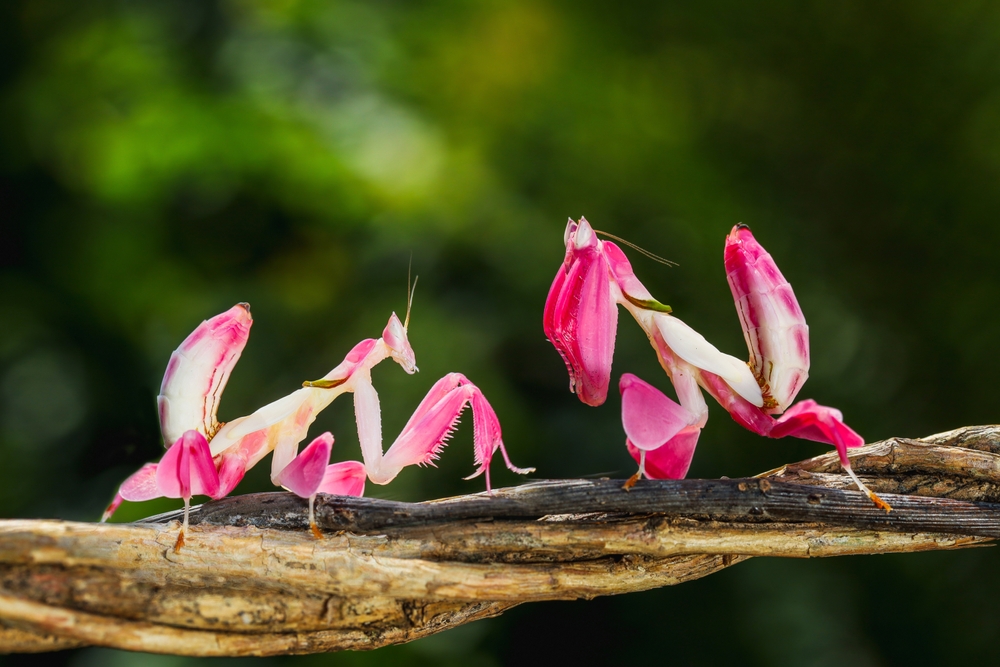
If you thought flowers couldn’t be deadly, think again. The orchid mantis is an exquisite master of disguise, blending seamlessly into its floral surroundings to ambush unsuspecting prey. With its petal-like limbs and vibrant colors, it resembles an orchid so closely that even humans can be fooled at a glance. This natural camouflage allows it to sit in wait for insects that are attracted to flowers, such as bees and butterflies. When the prey is close enough, the mantis strikes with lightning speed, capturing its meal without the need for a chase. It’s a perfect example of beauty being deadly.
But the orchid mantis’s deception isn’t purely visual. It can also emit scents similar to those of real flowers, enhancing its allure and making it an irresistible trap for pollinators. This strategy is like combining a visual illusion with a fragrant bait, ensuring that its cover isn’t blown. The orchid mantis is living proof that the best disguises in nature are often the most beautiful. It’s a reminder that in the natural world, appearances can be deceiving.
4. The Luring Light: Anglerfish
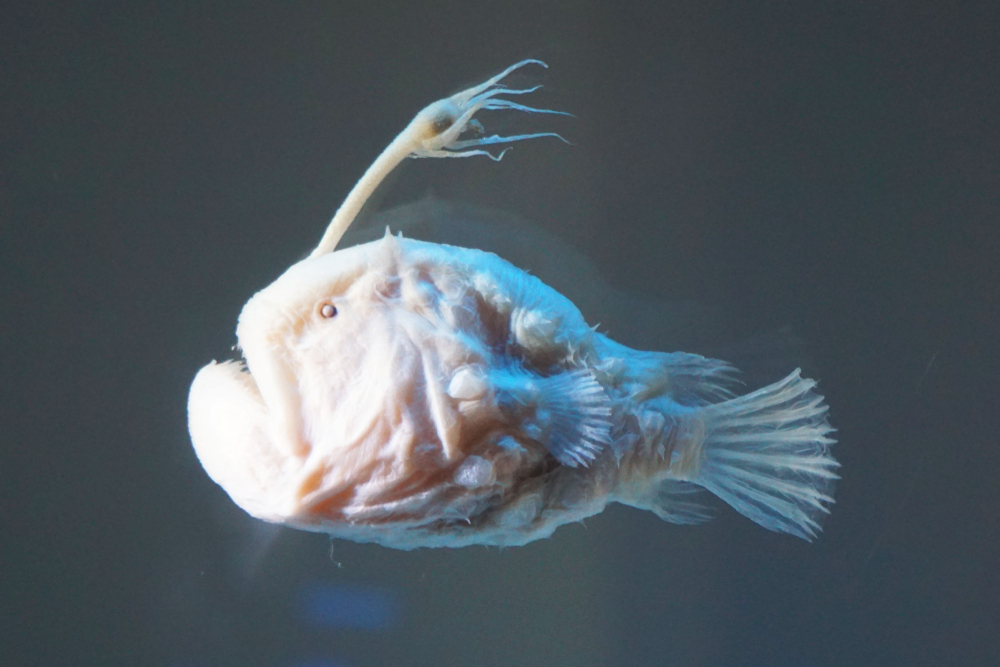
Deep in the ocean’s dark depths, the anglerfish dangles a lighted lure that promises an easy meal, only to deliver a fatal surprise. This bizarre-looking fish has a bioluminescent appendage that protrudes from its head, which it uses to attract prey. In a place where light is a rare commodity, the glowing lure becomes a beacon for curious fish and other sea creatures. They swim toward the light, thinking it might be food, only to find themselves in the jaws of the waiting anglerfish. It’s a hauntingly effective strategy that capitalizes on the scarcity of light in the abyss.
The anglerfish’s deceptive prowess doesn’t end with its glowing lure. Some species can control the light’s intensity, allowing them to adapt to different hunting conditions and prey types. Their ability to manipulate this natural flashlight showcases the complexity of their hunting techniques. For the unsuspecting prey, the encounter with an anglerfish is a lesson in the dangers of following the light. It’s a chilling reminder that in the ocean’s depths, not everything that glitters is gold.
5. The Decoy Trickster: Alligator Snapping Turtle
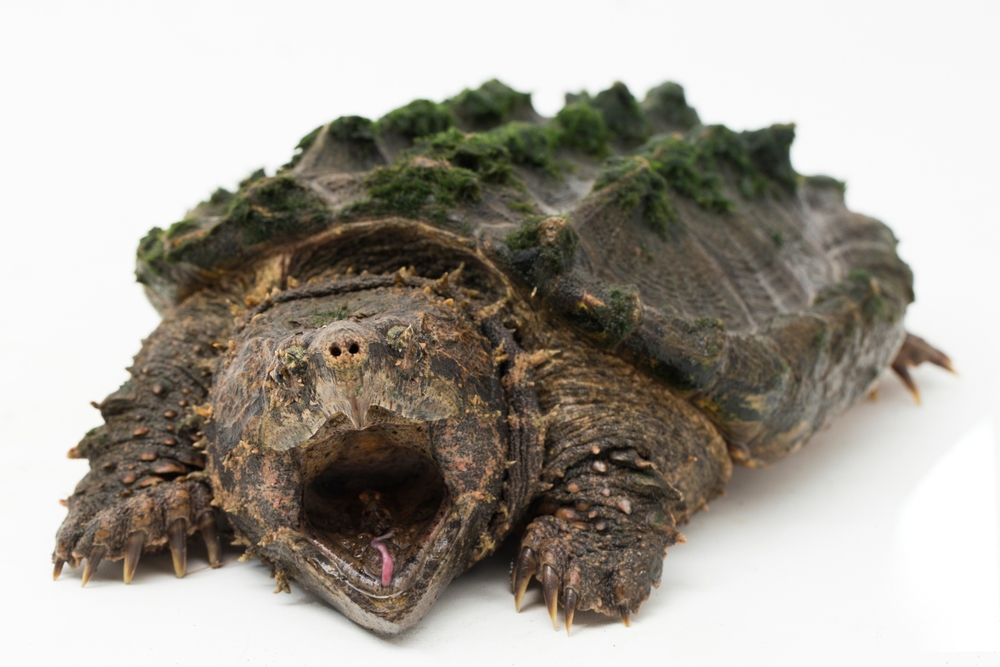
With a mouth that looks more like a mossy rock, the alligator-snapping turtle is a master of disguise in the murky waters it inhabits. But the real trick lies in its tongue, which it uses as a deadly lure. The turtle’s tongue has a worm-like appendage that it wiggles to attract fish. When a curious fish approaches, mistaking the tongue for a juicy worm, the turtle snaps its powerful jaws shut, making a meal of the unsuspecting victim. It’s a classic bait-and-switch tactic that relies on patience and precision.
This turtle’s deceptive hunting method is reminiscent of a seasoned angler patiently waiting for the right moment to reel in the catch. Its ability to remain motionless for hours, combined with its near-perfect camouflage, makes it an effective ambush predator. The alligator snapping turtle’s use of its tongue as a lure is an ingenious adaptation to its environment, showcasing how deception can be a crucial survival strategy in the wild. It’s a reptilian lesson in the art of fishing without a rod.
6. The Camouflaged Killer: Leaf-Tailed Gecko
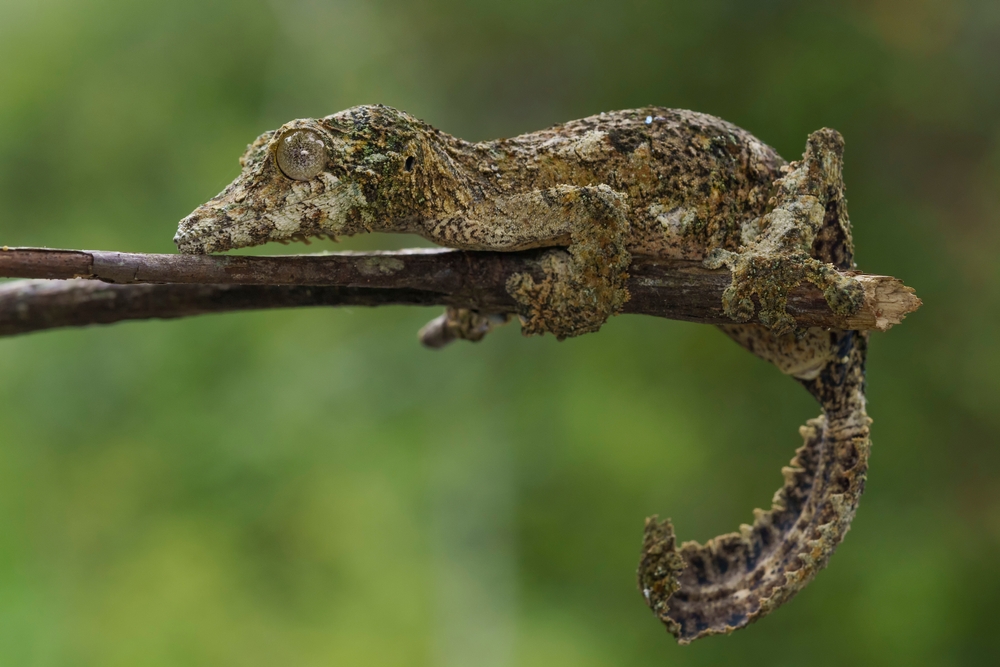
The leaf-tailed gecko is a reptilian illusionist, expertly blending into its forest surroundings to avoid predators and ambush prey. With a body shape and texture that mimics the appearance of dead leaves, this gecko can disappear against the forest floor or among branches. Its camouflage is so effective that it can remain hidden even at rest, waiting for an unsuspecting insect to wander within striking distance. This patience pays off when it lunges with lightning speed to secure its meal. For the leaf-tailed gecko, being invisible is the ultimate predatory advantage.
But there’s more to this gecko’s deception than just looking like a leaf. The gecko can also flatten its body against surfaces to minimize shadows, enhancing the illusion and making it even harder to detect. This ability to alter its posture and appearance depending on the situation demonstrates a sophisticated level of adaptation. The leaf-tailed gecko’s mastery of disguise is a testament to the power of evolution in shaping survival strategies. It’s a reminder that sometimes, the best way to hunt is to become one with the environment.
7. The Telltale Mockingbird: Lyrebird
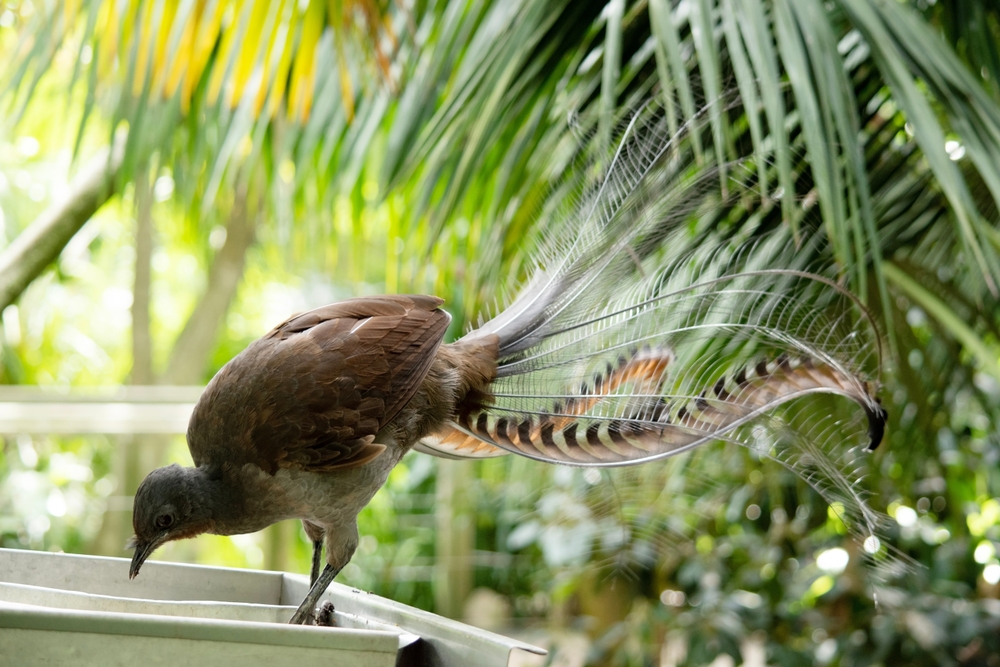
In the lush forests of Australia, the lyrebird uses its incredible vocal abilities to deceive both predators and prey. This bird is a master mimic, capable of imitating a wide range of sounds, from other bird calls to mechanical noises like chainsaws and camera shutters. By replicating the calls of other species, the lyrebird can create confusion and even lead predators away from its nest. But its mimicry isn’t just about survival; it also uses this skill to attract mates, proving that deception in nature isn’t always sinister.
The lyrebird’s talents make it one of the most fascinating vocalists in the animal kingdom. Its ability to weave together a symphony of sounds demonstrates an intricate understanding of its environment. Whether it’s tricking a predator or impressing a potential mate, the lyrebird shows that sometimes the best way to survive and thrive is by being the loudest voice in the forest. It’s a reminder that in the natural world, sound can be just as powerful a tool of deception as sight.
8. The Ghostly Ambusher: Snowy Owl
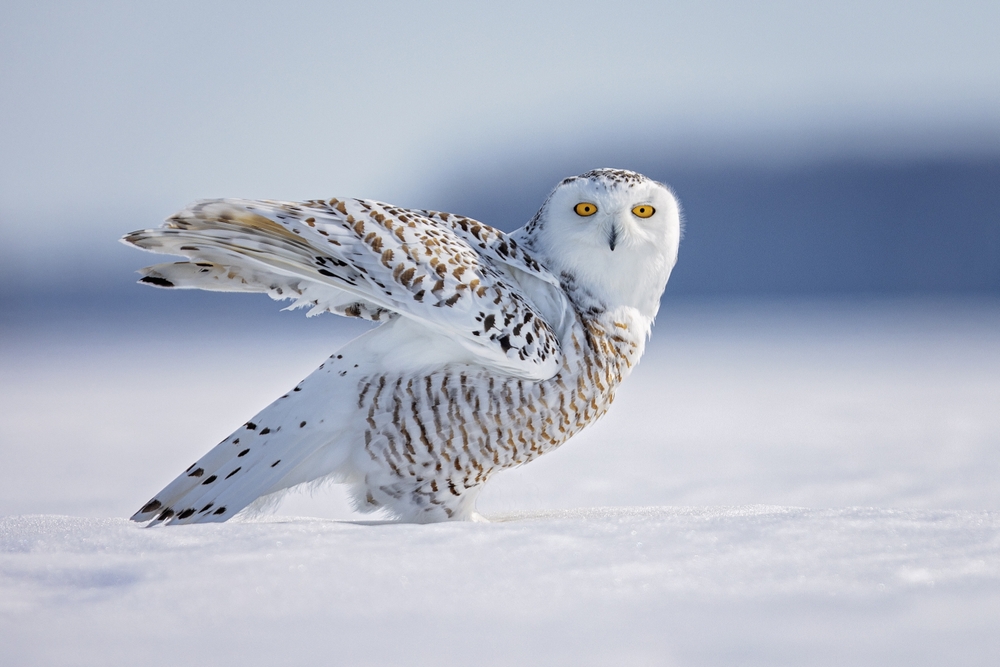
The snowy owl, with its pristine white plumage, is a silent predator of the Arctic tundra. While its appearance might be striking, it serves a crucial purpose: camouflage in the snow-covered landscapes it calls home. This natural disguise allows the snowy owl to approach prey like lemmings and hares without being detected. Its feathered feet help it move silently, making it a ghostly presence in the frozen wilderness. By the time the prey spots the owl, it’s usually too late to escape the powerful talons.
Beyond its camouflage, the snowy owl employs another deceptive tactic in its hunting strategy. When food is scarce, it can mimic the calls of its prey to lure them out of hiding. This vocal trickery adds another layer to its predatory prowess. In the harsh conditions of the Arctic, the snowy owl’s blend of stealth, camouflage, and cunning ensures its survival. It’s a powerful example of how nature equips its creatures with the tools they need to thrive, even in the most unforgiving environments.
9. The Rock Mimic: Stonefish
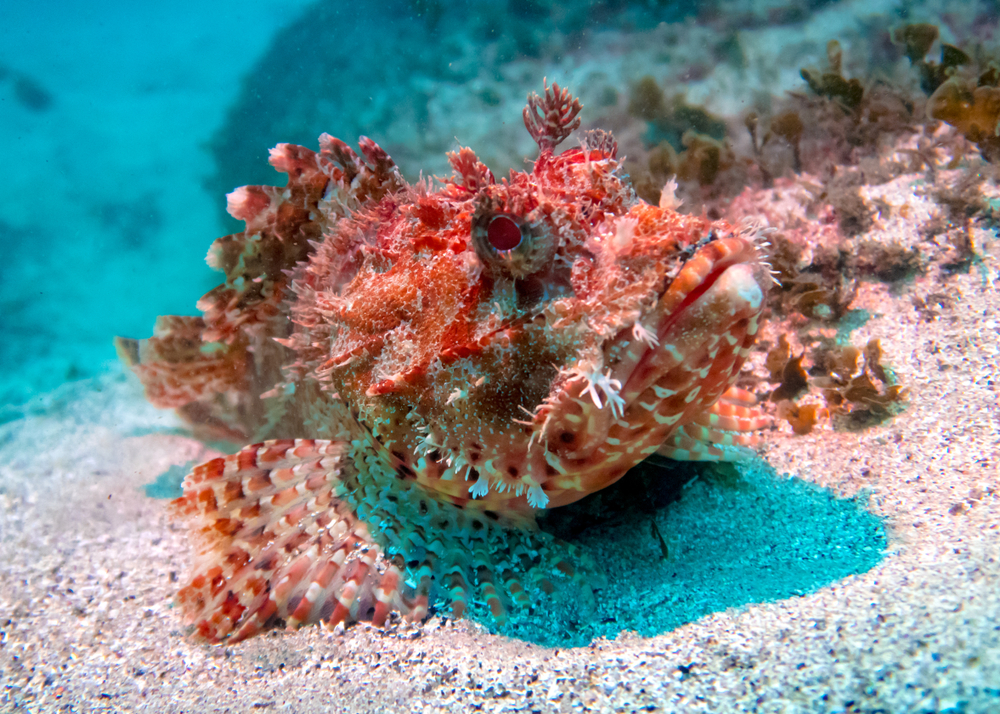
The stonefish is the ultimate master of disguise beneath the waves, and its appearance is a testament to the art of blending in. With a body that resembles a rough, algae-covered rock, this fish can sit undetected among coral reefs and ocean floors. Its camouflage is so effective that even divers and snorkelers can easily mistake it for just another piece of the underwater landscape. This natural disguise allows the stonefish to ambush prey like small fish and crustaceans that wander too close. With a sudden burst of speed, it sucks its meal into its mouth with alarming efficiency.
Yet, the stonefish’s deception isn’t just for hunting. Its rock-like appearance also serves as protection from potential predators. And if its disguise fails, the stonefish has another trick up its sleeve: venomous spines along its back that can deliver a painful and potentially lethal sting. This dual approach of deception and defense makes the stonefish one of the ocean’s most formidable and feared inhabitants. It’s a potent reminder that in the underwater world, looking like a rock can be a matter of life and death.
10. The Trickster Insect: Assassin Bug
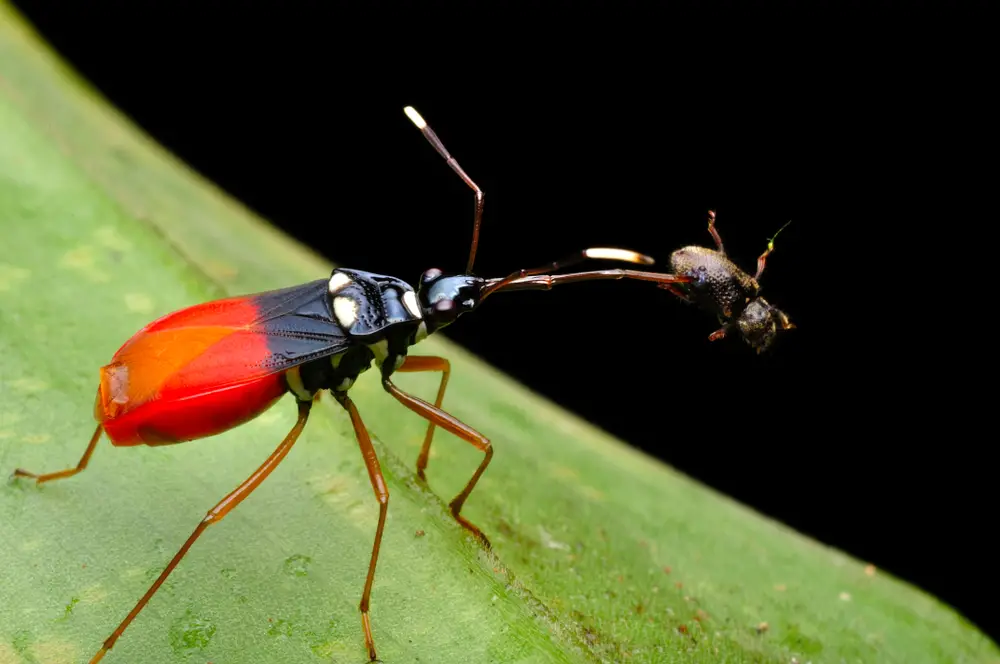
The assassin bug is an insect with a deadly reputation and a knack for deception. Unlike other predators that rely solely on brute force, this bug employs a more cunning approach. It can lure ants and other insects to their doom by using a clever disguise: it attaches the remains of its previous victims to its back. This gruesome costume not only masks its true identity but also provides a form of protection, as it appears larger and more intimidating. As its unsuspecting prey approaches, thinking it’s about to scavenge a meal, the assassin bug strikes with precision.
That’s not all; the assassin bug also uses chemical deception to capture its prey. It can release pheromones that mimic the alarm signals of its target species, causing chaos and confusion among them. In the midst of the disarray, the assassin bug picks off its victims one by one. This combination of visual and chemical deception makes the assassin bug a formidable predator in the insect world. It’s a chilling example of how nature’s tricksters can turn the tables on their prey with creativity and cunning.
11. The Illusionist Bird: Drongo
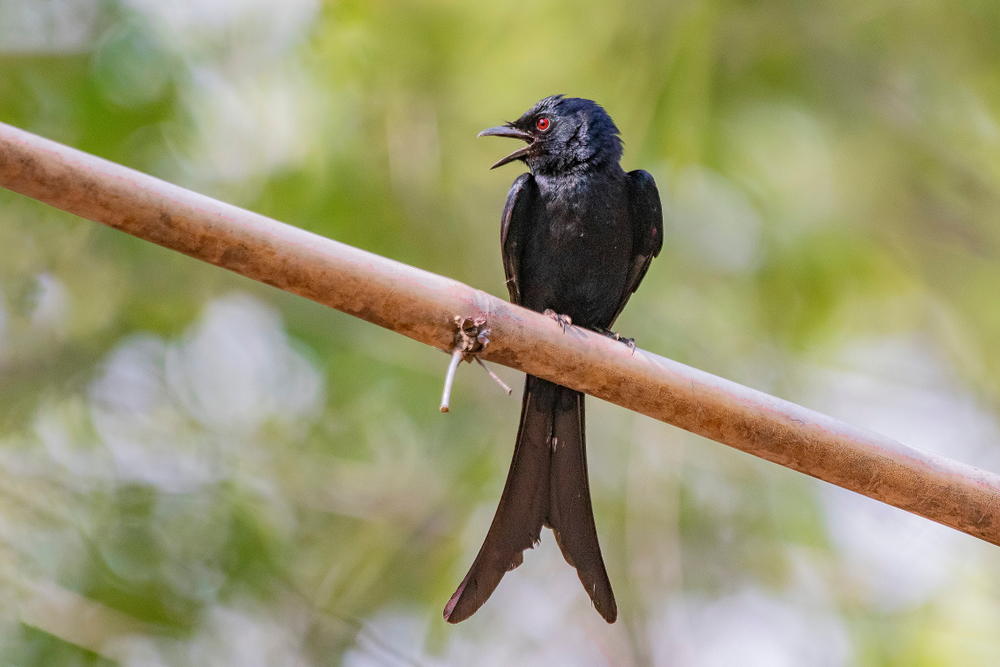
The drongo is a bird with a talent for trickery, and its deceptive skills are both impressive and entertaining. Known as the “Kalahari’s greatest trickster,” the drongo uses its ability to mimic the alarm calls of other animals to its advantage. By imitating these danger signals, it can cause meerkats and other creatures to abandon their food in a hasty retreat. Once the coast is clear, the drongo swoops in to steal the meal for itself. It’s a clever and opportunistic strategy that highlights the bird’s intelligence and adaptability.
But the drongo’s deception doesn’t stop with simple alarm calls. It can also mimic various other sounds to manipulate its environment and gain an advantage. Whether it’s distracting a predator or confusing a rival, the drongo’s vocal repertoire is a powerful tool in its survival arsenal. This bird’s trickery showcases the complex interplay of communication and deception in the animal kingdom. It’s a fascinating reminder that in nature, a sharp mind can be just as effective as sharp claws.
12. The Impostor: Cuckoo Bird
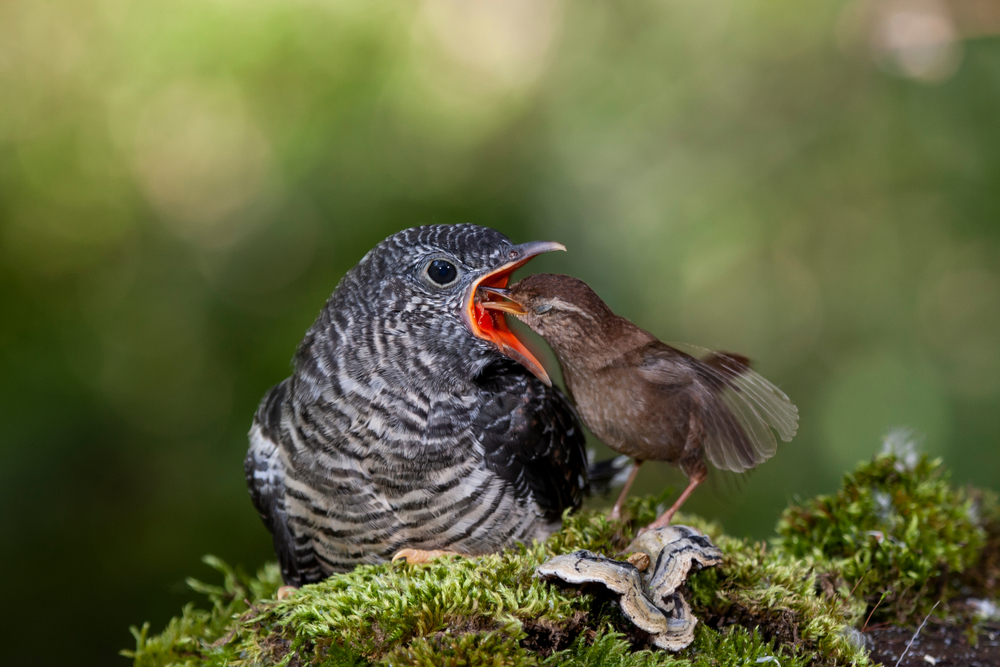
The cuckoo bird is infamous for its parenting deception, turning the tables on its avian neighbors in a most cunning way. Instead of building its own nest, the cuckoo lays its eggs in the nests of other bird species, leaving the unsuspecting host to raise its young. The cuckoo’s eggs often mimic the appearance of the host’s eggs, reducing the likelihood of detection. Once hatched, the cuckoo chick may even push out the host’s eggs or young to ensure it receives all the care and resources from its foster parents. This strategy allows the cuckoo to invest its energy elsewhere while still ensuring its offspring’s survival.
This practice of brood parasitism is one of nature’s most intriguing examples of deception. It’s a strategy that requires precision timing, as the cuckoo must lay its eggs at the right moment to avoid detection. Over time, host species may develop defenses against this trickery, leading to an evolutionary arms race between the cuckoo and its hosts. The cuckoo’s deceptive tactics highlight the complex and competitive dynamics of avian reproduction. It’s a testament to the lengths some species will go to ensure their genetic legacy.
13. The Mimic Octopus: Marine Shape-Shifter
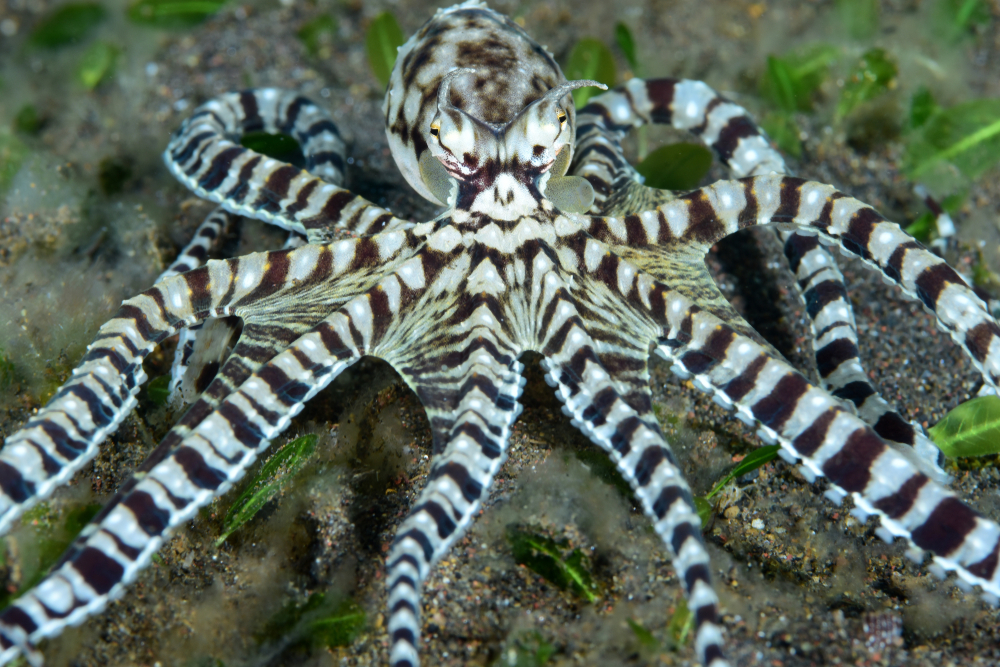
The mimic octopus is a marine marvel, with a talent for transformation that would make any shape-shifter envious. This clever cephalopod can change not only its color and texture but also its shape and behavior to mimic other marine creatures. From lionfish and flatfish to sea snakes, it can imitate a variety of animals to avoid predators or sneak up on prey. By adopting the appearance and movements of potentially dangerous creatures, the mimic octopus can deter threats while moving unnoticed through its environment.
Its deception isn’t just visual; the mimic octopus can also use its flexible body to alter its silhouette and swimming patterns. This adaptability allows it to improvise, choosing the most effective disguise for any given situation. The mimic octopus’s ability to assume multiple identities makes it one of the ocean’s most versatile and elusive creatures. It’s a reminder of the incredible diversity of survival strategies in the underwater world and the power of illusion in the dance of predator and prey.
14. The Sneaky Predator: Green Heron
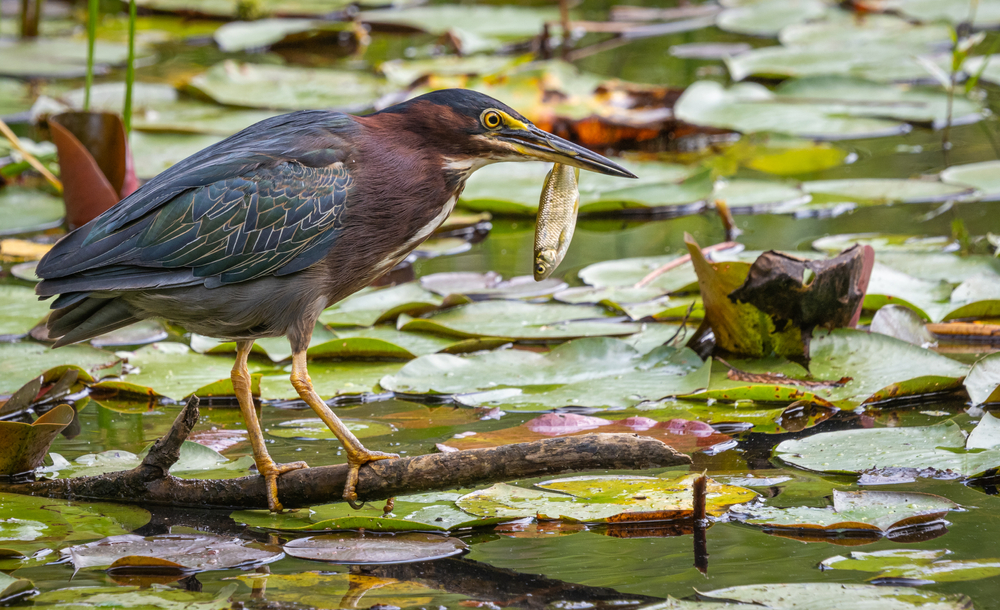
The green heron is a bird with a unique trick up its sleeve—or rather, its beak. Unlike most herons, which rely on stealth and surprise to catch fish, the green heron uses tools to lure its prey. This clever bird has been observed dropping insects, feathers, or small objects onto the water’s surface to attract fish. When a fish comes to investigate, the heron strikes with its sharp beak, securing its meal with precision. It’s a crafty use of deception that makes the green heron stand out in the avian world.
This fishing technique highlights the heron’s problem-solving abilities and adaptability. By using bait, the green heron can hunt more efficiently, expending less energy than if it were to chase its prey. This behavior is a fascinating example of tool use in birds, showcasing their intelligence and ingenuity. The green heron’s fishing method serves as a reminder that in the natural world, sometimes the key to success lies in thinking outside the box—or in this case, outside the pond.
15. The Flashing Trickster: Firefly
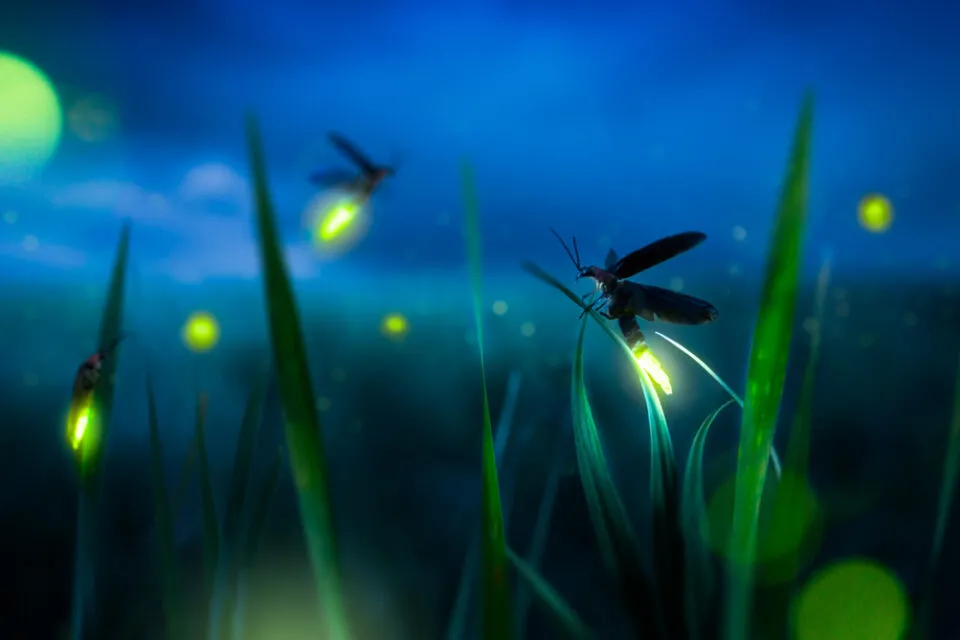
Fireflies might seem like harmless, twinkling lights in the nighttime air, but some species have a more sinister side. Known as “femme fatales,” these fireflies use their bioluminescent flashes to deceive and trap their prey. Female fireflies of one species will mimic the light patterns of another to attract unsuspecting males. Once the male approaches, thinking he’s found a receptive mate, the female turns predatory and devours him. It’s a deadly twist on romantic deception, highlighting the dual nature of these enchanting beetles.
This deceptive strategy allows the female fireflies to supplement their diet with essential nutrients found in their prey. By exploiting the courtship signals of other firefly species, they ensure a steady supply of meals without having to hunt. The “femme fatale” fireflies are a powerful example of how nature’s most beautiful displays can hide darker intentions. It’s a reminder that in the wild, the line between life and death can be as fleeting as the blink of a firefly’s light.
